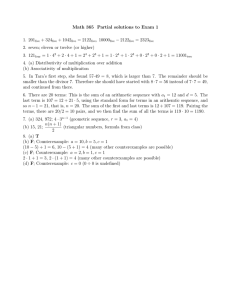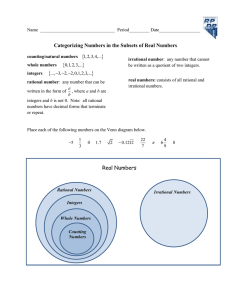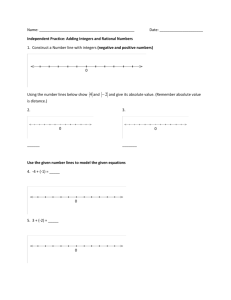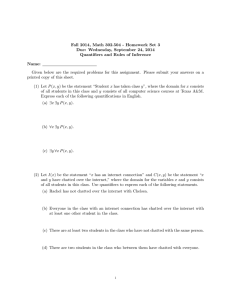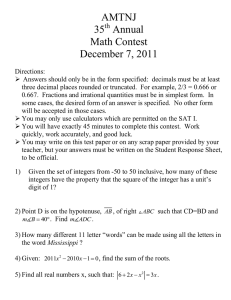Math 365 Partial solutions to Exam 3 1. (a) −5, −8
advertisement
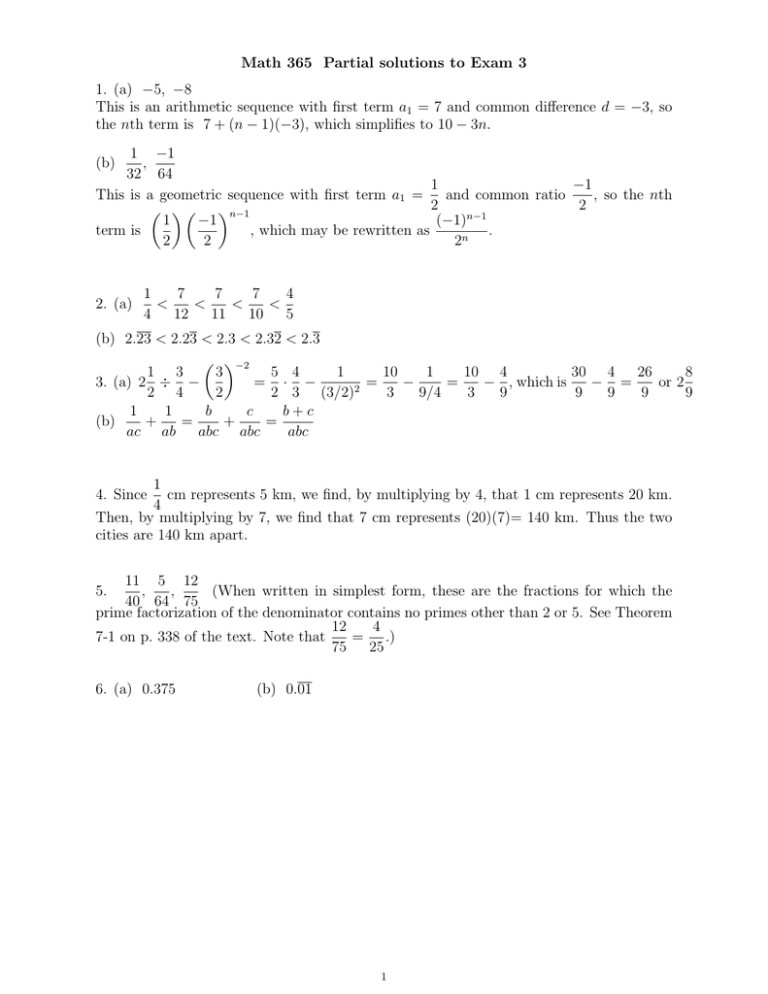
Math 365 Partial solutions to Exam 3
1. (a) −5, −8
This is an arithmetic sequence with first term a1 = 7 and common difference d = −3, so
the nth term is 7 + (n − 1)(−3), which simplifies to 10 − 3n.
1 −1
,
32 64
1
−1
This is a geometric sequence with first term a1 = and common ratio
, so the nth
2
2
n−1
−1
(−1)n−1
1
, which may be rewritten as
term is
.
2
2
2n
(b)
2. (a)
1
7
7
7
4
<
<
<
<
4
12
11
10
5
(b) 2.23 < 2.23 < 2.3 < 2.32 < 2.3
−2
3
1
10
1
10 4
30 4
26
8
1 3
5 4
=
−
=
− , which is
− =
or 2
3. (a) 2 ÷ −
= · −
2
2 4
2
2 3 (3/2)
3
9/4
3
9
9
9
9
9
1
1
b
c
b+c
(b)
+
=
+
=
ac ab
abc abc
abc
1
cm represents 5 km, we find, by multiplying by 4, that 1 cm represents 20 km.
4
Then, by multiplying by 7, we find that 7 cm represents (20)(7)= 140 km. Thus the two
cities are 140 km apart.
4. Since
11 5 12
5.
,
,
(When written in simplest form, these are the fractions for which the
40 64 75
prime factorization of the denominator contains no primes other than 2 or 5. See Theorem
12
4
7-1 on p. 338 of the text. Note that
= .)
75
25
6. (a) 0.375
(b) 0.01
1
7. (a)
105
21
=
1000
200
(b) Let n = 0.15 = 0.151515 . . .. Then
100n = 15.151515 . . .
−
n = 0.151515 . . .
99n = 15
Therefore n =
15
5
= .
99
33
(c) Let n = 4.315 = 4.3151515 . . .. Then
100n = 431.5151515 . . .
−
n = 4.3151515 . . .
99n = 427.2
Therefore n =
427.2
4272
712
=
=
.
99
990
165
8. (a) False. Counterexample: Let a = 2, b = 1, c = 3. Then a−b+c = 2−1+3 = 1+3 = 4
(or you can think of this as 2 + (−1) + 3 ) and a − (b + c) = 2 − (1 + 3) = 2 − 4 = −4.
(Many other counterexamples are possible. Note that the equation will be true whenever
c = 0, however.)
(b) True. (Remember that the set of integers is the set {. . . , −3, −2, −1, 0, 1, 2, 3, . . .}. If
you take any two elements from this set, and subtract one from the other, you will get
another element of this set.)
(c) False. Counterexample: Let a = 1, b = 2, c = 3. Then
a+b
1+2
3
b
2
=
= and = .
a+c
1+3
4
c
3
ab + bc
b(a + c)
=
= a + c.)
b
b
1
(e) False. Counterexample:
is a rational number that cannot be written as a finite
3
decimal. (Remember that a rational number is a number that is equal to a quotient of two
a
integers, that is, where a, b are integers and b 6= 0.)
b
(d) True. (Since
(f) True. (The technique used in #7 converts repeating decimals to quotients of integers.
In this way, you can see that they are all rational numbers.)




